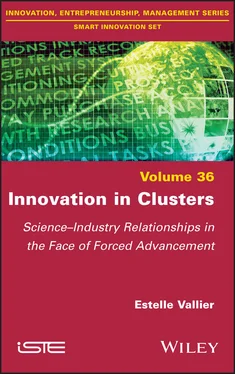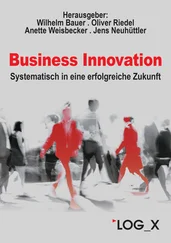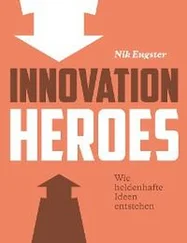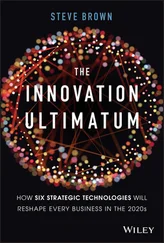In their book, Technopoles of the World: The Making of 21st Century Industrial Complexes , Manuel Castells and Peter Hall analyze the different forms of industrial organization that technopoles can take (Castells and Hall 1994). Based on an empirical study of the principal global concentrations of technological activities, they distinguish between different types of technopoles, which show how broad the reference can be: high-tech industrial complexes (Silicon Valley, Route 128); science cities, where scientific research predominates, but where the link with the local industrial fabric is weak (the example of Tsukuba in Japan is highlighted); technology or science parks, which, for the authors, are the result of public initiatives for the economic development of the territory (Sophia Antipolis in France, Cambridge in the United Kingdom); even metropolitan areas such as Paris, Tokyo and London. From all these case studies, Castells and Hall identify three main motivations for technopoles: reindustrialization, regional development and the creation of synergies. The authors specify the long time needed to achieve these three objectives: 20–30 years to see the first effects.
Thus, for Faberon, the primary function of a technopole, and often the only one achieved, is to welcome business (Faberon 1990). In order to do this, various financial benefits are granted: free assistance services, notably through help in setting up projects, industrial property, interest-free loans, help in setting up a business through reduced rents and research and development subsidies. In addition, the site on which the technopole is located must be close to research and training institutions. It must also be well served by means of communication, proximity to highways, an airport, rail links, etc. Finally, as the quality of the buildings and the environment contribute to the image of the cluster, the site must have good landscaping and architecture and must include facilities (favorable living conditions, good health and school facilities, cultural life, etc.). The technopole is seen as a complete space combining three interrelated zones: an industrial fabric and work spaces, a core of institutes and research laboratories and residential areas for researchers and their families (Tatsuno 1987).
Thus, the technopolitan space is embodied in:
A place of spectacular urban planning, high-end leisure facilities, and cultural events […]. Indeed, creation is not limited to discoveries and applications in the scientific and industrial fields […]. It is the sum of human activity which is carried along in the wake of the intelligence revolution. A revolution which, in order to bear all its fruits, must in fact encompass all spheres of existence, which supposes that intelligence does not remain limited to the economic field alone (Garnier 1988b, p. 169).
The technopole is therefore seen as a “new city in which the informal contacts generated by cultural, sporting and civic activities would have contributed to cross-fertilization” (Rasse and Arasziewiez 2007, p. 3). Nevertheless, some of the literature on technopoles, in addition to showing that the accumulation of all these factors does not necessarily guarantee innovation performance (Castells and Hall 1994; Cooke 2001), questions the artificiality of these spaces and the consequences for technopolitan workers. A detour through Japan and the work of Sheridan Tatsuno demonstrate the artificial dimension of the creation ex nihilo of the Tsukuba technopole (also studied by Castells and Hall):
Many Tsukuba residents miss nothing more than walking through crowds on narrow sidewalks, sitting elbow to elbow in unimaginably tiny cafes and restaurants to warm their bodies and minds with sake and rich beers to maintain their long-standing relationships with the local butcher, baker, and police officer… It may be the city of brains, but it has neither heart nor soul (Tatsuno 1987, p. 139).
These critical comments on the artificiality of the technopole as a means of creating innovation spaces in areas that are, we might say, technology-free, occur early in the literature, but are still the minority view. Most of the literature on technopoles provides us with information on the mechanisms put in place, usually by public bodies, to generate a local culture, an innovation-producing environment. By highlighting a series of factors conducive to the creation of innovation, it differs from the literature on innovative environments, which seeks to determine how the “environment” is likely to innovate on the basis of the existing fabric (and in particular on the basis of a long-standing local culture, the history of the actors involved, etc.).
1.2.2. A spontaneous and innovative environment conducive to a “technological atmosphere”?
In the mid-1980s, regional and industrial economies differentiated between, on the one hand, “the regions that are winning”, to use the title of Benko and Lipietz’s book literally (Benko and Lipietz 1992), and on the other hand, those that are losing. The concentration, or otherwise, of research and development activities thus appears to be decisive. The European Research Group on Innovative Environments ( Groupe de Recherche Européen sur les Milieux Innovateurs , GREMI) is investigating some 15 regions in Europe in a comparative approach in order to answer the question of why are some regions developing while territories with large manufacturers are in progressive decline. In this perspective, the analysis grid becomes the notion of environment. Linked to the life sciences, its definition is understood as “a set of external factors that act in a permanent or lasting way on living beings” (Coppin 2002, p. 32). Cangilhem emphasizes the predominance of the deterministic dimension in the notion of environment developed in biology (Cangilhem 2000). This systemic character is largely revisited in the concept of the innovative environment, insofar as the authors consider that innovation is no longer the product of single enterprises, but of the social, economic and political factors necessary for the innovation process. GREMI’s authors combine an industrial analysis with a spatial analysis of innovation and base this on three axes (Camagni and Maillat 2006): the technological paradigm (the capacity of the enterprise to develop a technology with a view to differentiating itself from its environment), the organizational paradigm (the capacity of the enterprise to establish relationships with the other actors in its environment) and the territorial paradigm (the capacity of the enterprise to identify and take advantage of the attributes of its territory: know-how, competencies, as well as institutions, etc.).
One of the best known examples is the study of the Jura Arc (Maillat et al . 1992), which analyzes the transition from an industrial district centered on the watchmaking industry to a technological district focused on microtechnology. In this transformation, the role of the environment is highlighted insofar as innovation has taken place on the basis of the existing fabric: a shift from mechanical to electronic skills, the gradual integration of electronic products from watchmaking into printed circuit components, etc. (Pfister and Nemeti 1995, p. 29). In this regard, Benko tells us that innovative enterprises do not pre-exist in local environments, but are secreted by them (Benko 2007). Gradually, local training courses are adjusting the content of their teaching to this reconversion, such as the Lausanne Polytechnic, the Swiss Laboratory for Watchmaking Research and the Swiss Center for Electronics and Microtechnology. This adjustment is also favored by the environment, that is, the local industrial culture and the mobility of people on the labor market.
While Marshall spoke of an industrial atmosphere in his works on the district, theories on the environment tend to show that a technological atmosphere conducive to innovation can exist in some fashion within a territory. Among these works on the concentration of technological activities, divergences appear on the relevant spatial scale of such systems: from very localized business parks (Bernardy and Boisgontier 1988) to regional innovation systems (Cooke 2001) and urban innovation systems (Grossetti 2001).
Читать дальше












